Index
Page 3 of 6
Layout:
While the board is a full ATX design, much space has been left out for no reason. This combo board is a direct variation of the non-combo board, only extended with two more DDR3 slots. The audio header is located behind the Northbridge cooler, which is not a wise decision, because you need to route the cable across the board. Why Gigabyte only uses a 4-pin CPU-power-connector is beyond our understanding, because most of the PSUs come with an EPS-connector. If you have a PSU which does come with an EPS to P4 adapter cable it will add to the cable mess inside a case. Also, this board features lots of overclocking features, so an EPS connector would have helped, too.
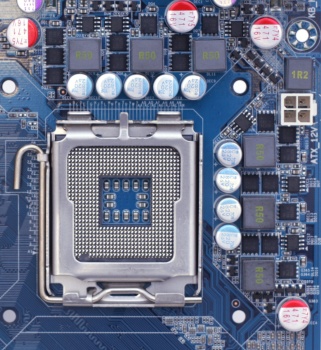
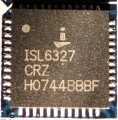
The VRM is an analog 6-phase design driven by an ISL6327, which is quite efficient. Forget about eight, ten, twelve phases, with the new 45nm CPUs there is no need for that. This board doesn't feature a heatpipe, so a big aluminum heatsink is keeping the temperature of the Northbridge in check. On the Southbridge a small aluminum heatsink does the same.
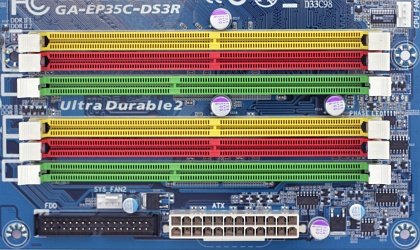
The memory slots are well placed. They are quite far away from the PCIe x16 slot, so you can change the memory with the graphics cards installed. The power-and floppy connectors are placed beneath.
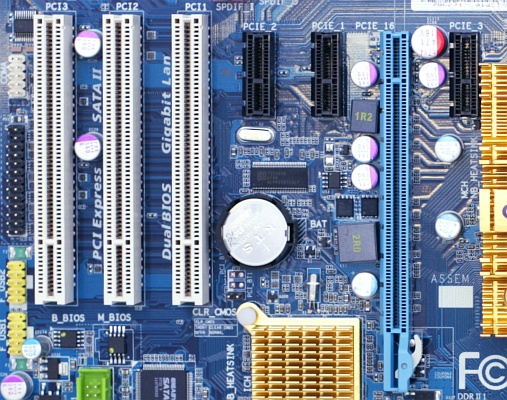
The slots are configured well, there is space behind the PCIe x16 slot, so you can buy one of the cards which features a passive cooler on the back of the graphics-card. There is no second PCIe x16 slot, so Crossfire is out of the question, but an HD3870X2 card will run fine. Three PCI slots give you plenty possibilities to use your old cards.
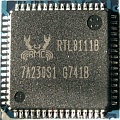
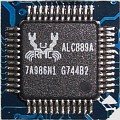
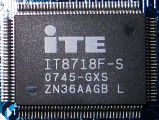
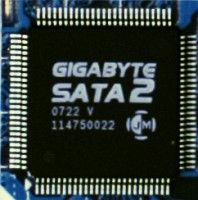
Network connectivity is provided by one Realtek RTL8111B chip. Realtek is not known for very good performance, especially the I/O load is quite weak. A Marvell, Broadcom or Intel chip would have suited better, but of course would also have increased costs. Audio is also provided by a Realtek chip: the ALC889A. We are not able to determine the difference between ALC888 and ALC889A, because the Realtek webpage doesn't know about it. The ITE chip is a super I/O controller, for all legacy devices, such as Floppy, LPT and COM ports. The so called "Gigabyte SATA2" chip is a JMicro JMB363.
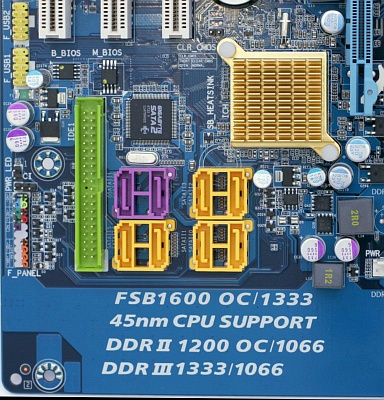
The SATA and PATA connectors are not on the edge of the board. Instead, Gigabyte decided to write some useless information on the unused space, instead to relocate the connectors. So the IDE connector is not placed well, a 90° relocation would have been more convenient. The better part is, you have plenty of SATA ports, so you can use up to eight SATA drives. If you plan to build a home-server, this board is definitive worth a thought. The board does not feature a power-LED, only the six phases have LEDs which will light up during booting, but you haven't any other diagnostic capabilities onboard. The front-panel-header is standard Gigabyte colored, so it's quite easy to correctly connect the front-panel.
